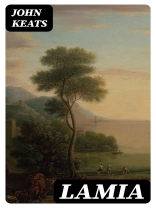John Keats’s ‘Lamia’ is a dazzling narrative poem that intricately explores the themes of love, transformation, and the tensions between reality and illusion. Set against the backdrop of both classical and romantic sensibilities, Keats employs a rich, lyrical style, characterized by vivid imagery and metaphorical depth. The poem centers on the tragic love story of Lamia, a serpent-woman transformed into a beautiful nymph, whose quest for love ultimately leads to her heartbreak and demise. Delving into the complexities of desire, Keats adeptly weaves philosophical reflections on the nature of existence and the costs of beauty, echoing the aesthetic ideals of the Romantic era. John Keats (1795-1821), one of the most celebrated poets of the Romantic movement, drew upon his own experiences of love and loss when crafting ‘Lamia.’ His brief life, riddled with personal tragedies including the death of his brother and his own struggle with illness, deeply informed his artistic vision. Keats was a fervent believer in the surpassing power of imagination, which is palpably reflected in the lush descriptions and emotionally charged narrative of this poem. ‘Lamia’ is a compelling read that invites readers to ponder the bittersweet nature of love and the often illusive pursuit of beauty. Keats’s masterful intertwining of myth and emotion renders this poem not only a critical exploration of human experience but also a testament to his lyrical prowess. It is a must-read for those interested in the rich tapestry of Romantic poetry and the profound depth of the human condition.
Giới thiệu về tác giả
John Keats (1795–1821) stands as one of the most revered figures in British Romantic poetry, best known for the rich imagery and emotional intensity of his odes and narrative poems. Keats, born in London, embarked on a medical career before his poetic inclinations took precedence. His foray into literature produced masterpieces that continue to captivate readers for their lyrical beauty and philosophical depth. Despite his brief career, interrupted by his untimely death from tuberculosis at the age of 25, Keats’s work has left an indelible mark on English literature. Among his notable works is ‘Lamia’, a narrative poem that invokes the ancient myth of a beautiful serpent woman who becomes human. This poem, like many of Keats’s works, is marked by its vivid imagery, sensuous language, and exploration of themes such as desire, transformation, and the fleeting nature of happiness. ‘Lamia’ epitomizes Keats’s stylistic and thematic preoccupations, demonstrating his keen ability to blend classical mythology with the psychological complexity of his characters. His oeuvre, though limited in quantity, is distinguished by its quality, and Keats remains a central figure in the Romantic canon, his work inspiring a legion of poets that followed.












